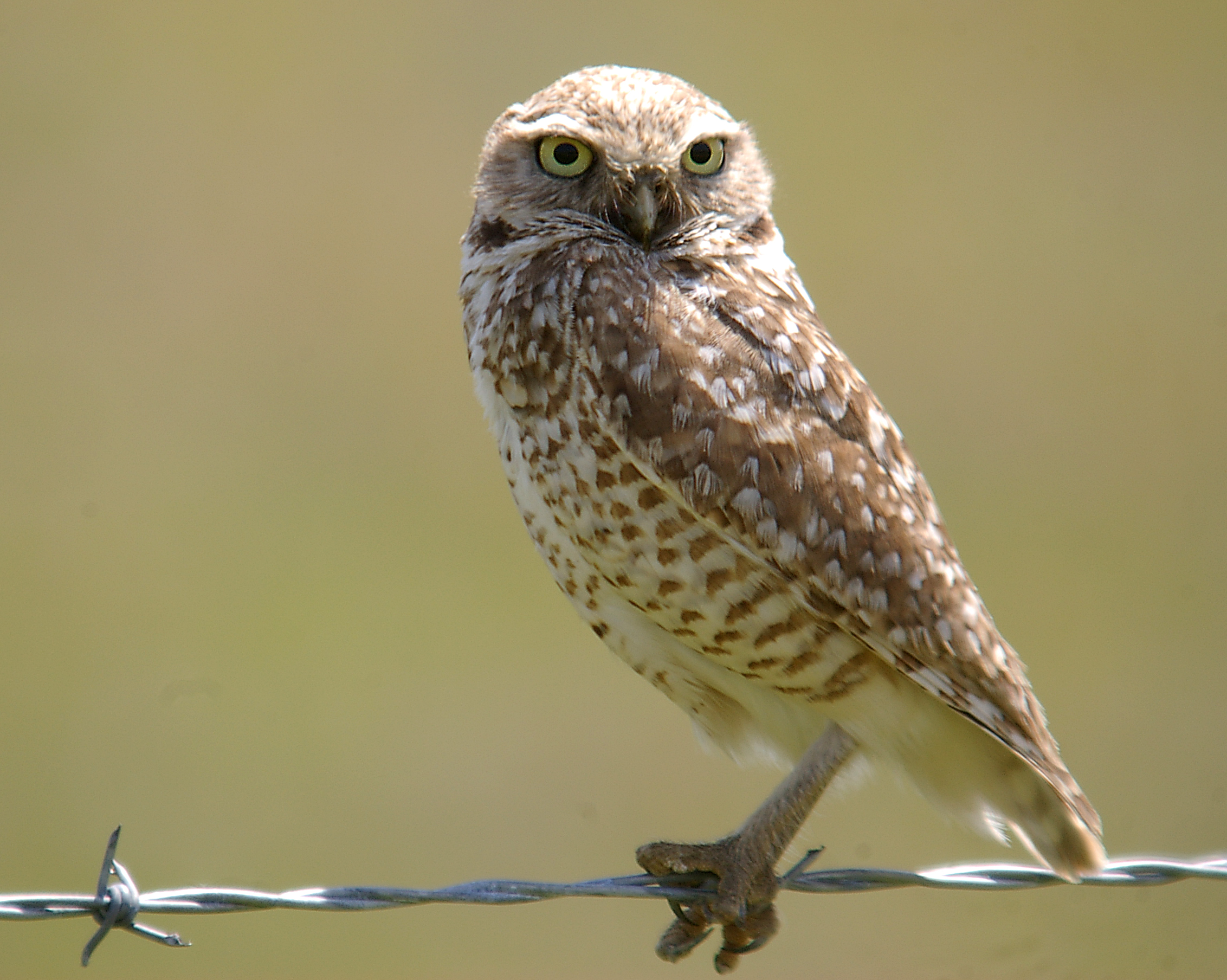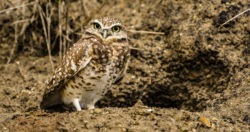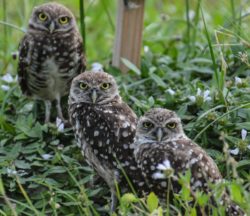
Sea Wonder: Burrowing Owl
Once called “howdy birds” by cowboys due to the rhythmic head nods they make from the entrance of their burrows, burrowing owls (Athene cunicularia) are a fan favorite due to their unique appearance and behavior. They are found in the open country of North America including Florida Keys and west coast national marine sanctuaries!
Appearance
Burrowing owls are one of the smaller species of owls, reaching heights of only about nine inches and weighing in at about seven ounces when fully grown. Unusual for owl species, burrowing owls do not tend to differ in size between males and females; in most owl species females are larger than males when fully grown. Their feathers are a pale brown color with white spots throughout their plumage, though adults are more heavily spotted than chicks or juveniles. Their eyes are a bright yellow color, their tails are short and square, and their legs are unusually long and slender compared to their body size. Unlike other species of owls, burrowing owls do not have ear tufts.
Diet and Habitat
Burrowing owls are carnivorous, feeding on small birds, reptiles, large insects, fish, and rodents. They have a number of feeding strategies and can hunt during the day or at night depending on the season. To feed they might catch insects in flight using their beaks, jumping from an elevated perch and hovering over fields to pursue moving prey before clutching it in their talons, or running along the ground where it will trap prey in their talons or their beaks. Natural predators of the burrowing owl include badgers, coyotes, and raptors.
Burrowing owls are commonly found in open areas like grassland, prairies, farms, or air fields, and they prefer areas with short grass or exposed soil where they can excavate their burrows (usually ones already started by another animal and left behind), which can reach lengths of up to 10 feet. Before expansive development occurred, burrowing owls were most commonly found in prairie-dog towns in the American west. Today, burrowing owls can be found on golf courses, airports, industrial parks, vacant lots, and other open areas. These birds are found throughout North America, most commonly in the western and southwestern United States (and in or near many of California’s national marine sanctuaries) and in more arid regions of Central and South America. Burrowing owls have occasionally been seen in Florida, including in Florida Keys National Marine Sanctuary.
Life History
Burrowing owls usually live in bonded pairs for life and may live near other bonded pairs to form a small colony in the same area. Breeding season begins around mid-April with courtship behaviors that include pairs perching together, rubbing heads, and cooing to each other to name a few. Males will find materials to line the burrowed nest with and females will then lay between five and nine small, white eggs. Each parent takes turns incubating the eggs for about a month before hatching. Parents will also take turns foraging and caring for their owlets. When threatened, owlets will send a distress cry that mimics the sound of a rattlesnake which scares off predators. After about 40 days, the owlets leave the nest for good.
Unlike other species of owl, burrowing owls are diurnal, or mostly active during the day, and are overall quite energetic, bouncing up and down even when perched. These owls are the only species to perch on the ground. When in pursuit of prey or disturbed, they will flatten themselves against the ground or run instead of flying like other owls will.
Threats and Conservation
Burrowing owls are overall considered a species of least concern but this doesn’t mean individual populations don’t face threats. Increased development and urban sprawl has displaced burrowing owls, pushing them and their prey on which they rely on into smaller and smaller areas. Climate change, habitat loss and degradation, and human interaction are all other challenges facing burrowing owls, their range, and their ecosystems.


